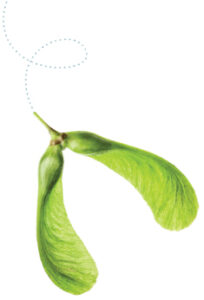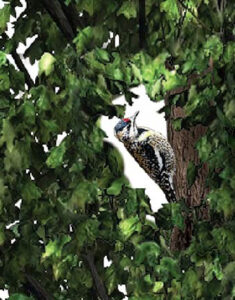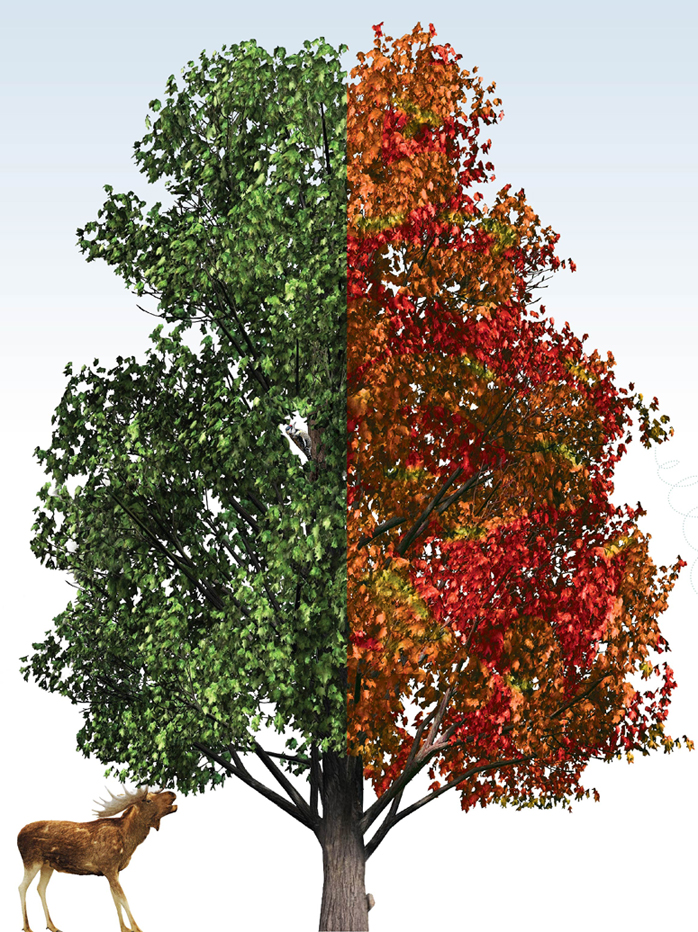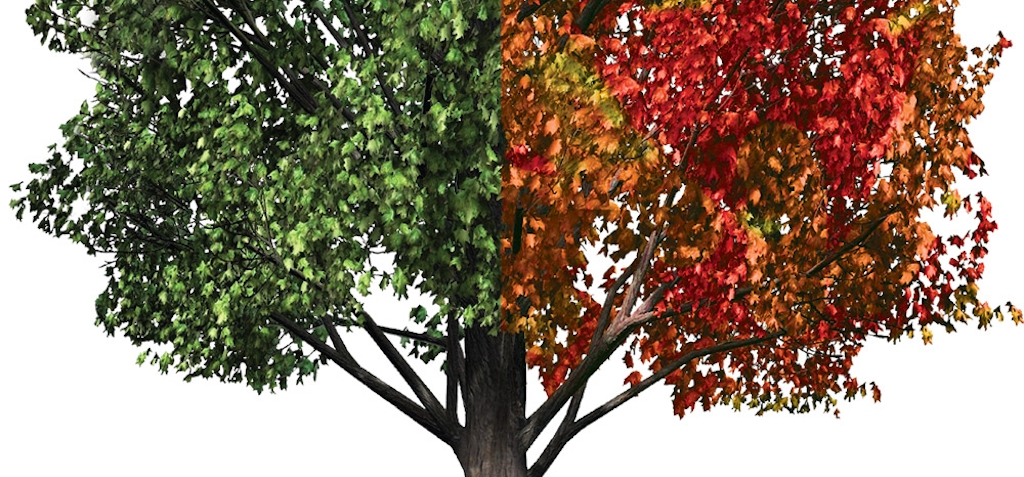Writing by Whit Beals, illustrations by Yellobee Studios.
It’s the perfect time of year to celebrate the glorious Sugar Maple! Known best for its ability to produce sweet sap that can be boiled down for maple syrup and other maple treats, the Sugar Maple (Acer saccharum) is also the backbone of New England’s stunning fall foliage.
Leaves and Fall Foliage
As temperatures cool and days shorten each fall, the Sugar Maple’s leaves change in color to warm hues ranging from yellow to bright orange and deep red. The bright colors we associate with fall actually exist in the leaves for the whole summer, but their dominant green-tinted chlorophyll breaks down in cooler weather to reveal the other hues present in the leaves.
Size and Age
Exceptional individual trees can grow to nearly 150 feet in height, but most range from 80-100 feet. Typical mature trees have trunk diameters of one to two feet at chest height, and when healthy, the Sugar Maple can live for more than 400 years.
 Seeds
Seeds
Sugar Maples’ abundant winged seeds, called samaras, fall from the trees in autumn. The wings allow seeds to spin many feet from their parent tree when there is a good breeze, which also helps shake the seeds loose from the tree.
Growth Conditions
In the forest, Sugar Maples grow best on rich, well-drained soils that are relatively low in acidity. They often form nearly pure stands known as “sugar bushes” when tapped for syrup. Sometimes syrup producers will remove other species from a stand to increase maple sap production. They are patient trees and regenerate well even when hemmed in by a closed forest canopy; as a shade-tolerant species, they simply wait for opportunities like gaps created by storm damage, and then grow rapidly to fill the void.
Sugar Maples are a common shade tree and adorn many homes throughout the species’ range from Tennessee to the Canadian Maritime Provinces and then west to the Great Lake states. However, Sugar Maples are not tolerant of air pollution and road salting, so their presence as roadside and city shade trees has dwindled, and they are often replaced by the non-native Norway Maple.
 Wildlife
Wildlife
Red, Gray, and Flying Squirrels feed on Sugar Maple seeds, buds, twigs, and leaves, and both they and many species of cavity-nesting songbirds utilize hollows in the trunks. Moose, White-tailed Deer, and Snowshoe Hares browse the leaves and twigs. The foliage harbors numerous species of insects, which provide forage for songbirds.
The Sugar Maple’s most interesting avian interaction, however, is with the aptly named Yellow-bellied Sapsucker, a woodpecker species that drills small holes in rings around Sugar Maples and some other trees. The sapsucker then feeds on both the sap that wells up from these holes, and on insects attracted to that sap. Much like people who produce maple syrup, they target Sugar Maples for the high sugar concentration in the species’ sap.
Timber
Also known as the Rock Maple, the Sugar Maple is an extremely valuable timber species, yielding products from flooring to exquisite furniture, pool cues, bowling pins, bowling alley lanes, musical instruments and baseball bats.
Its wood has many desirable qualities, among them durability, hardness, stability, and the ability to bend without splitting. Historically, this made it extremely useful for flooring in mills and factories, where it held up well under years of use by heavy iron-wheeled dollies and carts.
Fun Facts
Every National Basketball Association franchise has a court made with Sugar Maple flooring, and the Sugar Maple is the official state tree of Vermont, New York, West Virginia and Wisconsin.



